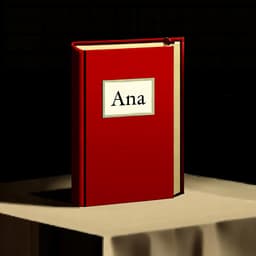In the afternoon
in Spanishpor la tarde
/por lah TAR-deh/
The standard way to refer to the general time block between lunch and nightfall. Use this when talking about doing something 'during' the afternoon.
💬Other Ways to Say It
de la tarde
/deh lah TAR-deh/
Used ONLY when telling a specific clock time.
en la tarde
/ehn lah TAR-deh/
The most common way to say 'during the afternoon' in Latin America.
a la tarde
/ah lah TAR-deh/
A regional variation often heard in the Southern Cone.
esta tarde
/EHS-tah TAR-deh/
Means specifically 'this afternoon' (today).
durante la tarde
/doo-RAHN-teh lah TAR-deh/
Means 'during the afternoon' or 'throughout the afternoon'.
🔑Key Words
Key Words to learn:
📊Quick Comparison
Choosing the right preposition is the hardest part of this phrase. Here is how to pick the right one.
| Phrase | Region | Best For | Avoid When |
|---|---|---|---|
| Por la tarde | General time periods (e.g., 'I work in the afternoon') | Telling specific clock time | |
| De la tarde | Specific clock times (e.g., 'At 3 PM') | General descriptions without numbers | |
| En la tarde | General time periods (same as 'por la tarde') | You are in Spain (it sounds foreign, though understood) |
📈Difficulty Level
Very straightforward. Just remember to roll the 'r' in 'tarde' slightly.
The only trick is choosing the right preposition (por/de/en).
Knowing when 'afternoon' ends and 'night' begins is different than in English cultures.
Key Challenges:
- Switching prepositions based on context
- Remembering that 7 PM is still 'afternoon'
💡Examples in Action
Yo estudio español por la tarde.
I study Spanish in the afternoon.
La reunión es a las cuatro de la tarde.
The meeting is at four in the afternoon.
Vamos al cine en la tarde.
Let's go to the movies in the afternoon.
¿Estás libre esta tarde?
Are you free this afternoon?
🌍Cultural Context
The Spanish 'Evening' Gap
English speakers often look for a translation for 'evening,' but Spanish essentially groups afternoon and evening together into 'la tarde.' 'La tarde' lasts until the sun goes down or dinner time, which can be as late as 9:00 PM or 10:00 PM in places like Spain during the summer.
When does the afternoon start?
In many English-speaking cultures, afternoon starts at 12:01 PM. In Spain and parts of Latin America, 'la tarde' doesn't really begin until after lunch, which might be around 2:00 PM or 3:00 PM. Before that, it's technically 'mediodía' (midday).
The Siesta Influence
Because the main meal of the day is often eaten around 2:00 PM, the early part of 'la tarde' (roughly 2 PM to 5 PM) is traditionally quiet time or siesta time in smaller towns, though business continues as usual in major cities.
❌ Common Pitfalls
Confusing 'Por' and 'De'
Mistake: "Saying 'Son las 3 por la tarde' or 'Voy al gimnasio de la tarde.'"
Correction: Son las 3 de la tarde / Voy al gimnasio por la tarde.
Translating 'Evening' Literally
Mistake: "Trying to find a separate word for the time between 5 PM and 8 PM."
Correction: Just use 'tarde'.
💡Pro Tips
The Number Rule
Here is the easiest way to remember: Do you see a number? If yes, use 'de la tarde' (Example: 4:00 de la tarde). If no number, use 'por la tarde' or 'en la tarde'.
Greeting Etiquette
You can say 'Buenas tardes' (Good afternoon) much later than you would in English. It is perfectly normal to say 'Buenas tardes' at 7:30 PM if you are walking into a shop.
🗺️Regional Variations
Spain
In Spain, 'tarde' lasts very late. You might have a snack (merienda) at 6 PM, which is solidly mid-afternoon for them.
Mexico & Colombia
While 'por la tarde' is taught in textbooks, you will hear 'en la tarde' much more frequently in daily life here.
Argentina (Rioplatense)
It is common to hear 'Voy a la tarde' (I'm going in the afternoon) in casual speech.
💬What Comes Next?
You are making plans and suggest the afternoon
¿A qué hora?
At what time?
A las cinco.
At five o'clock.
Greeting someone at 2 PM
Buenas tardes, ¿cómo estás?
Good afternoon, how are you?
Muy bien, gracias.
Very well, thank you.
🧠Memory Tricks
Use 'DE' when there is a Digit (a number/time). Use 'POR' when referring to a Period of time.
🔄How It Differs from English
The biggest difference isn't the words, but the concept of time. English speakers divide the day into morning, afternoon, evening, and night. Spanish speakers generally just use morning (mañana), afternoon (tarde), and night (noche). 'Evening' is absorbed into 'tarde' and 'noche'.
False Friends & Common Confusions:
Why it's different: There is no direct single-word translation.
Use instead: Use 'por la tarde' (until dark) or 'por la noche' (after dark).
🎯Your Learning Path
➡️ Learn Next:
How to say in the morning
Complete your knowledge of time periods.
How to say at night
Learn the final part of the day.
Telling time in Spanish
Essential for using 'de la tarde' correctly.
✏️Test Your Knowledge
💡 Quick Quiz: In the afternoon
Question 1 of 3
You want to say 'It is 4:00 in the afternoon.' Which phrase do you use?
Frequently Asked Questions
Is it wrong to say 'en la tarde' in Spain?
It is not 'wrong'—people will understand you perfectly—but it will sound non-native or Latin American. If you want to sound like a local in Madrid, stick to 'por la tarde'.
How do I say 'yesterday afternoon'?
You say 'ayer por la tarde'. You do not say 'ayer tarde' or 'ayer en la tarde' as commonly.
Is there a word for 'evening' in Spanish?
Not really. Spanish divides the day into three parts, not four. 'Evening' is usually covered by 'tarde' (early evening) or 'noche' (late evening/night). A poetic term exists ('el atardecer' - dusk/sunset), but it's not used for time telling.
Can I just say 'en la tarde' for everything to keep it simple?
You can use 'en la tarde' for general situations, but you cannot use it for specific times. You must never say '3 en la tarde.' For clock times, you have to learn 'de la tarde.'
📚Continue Learning Spanish Phrases
Explore More Phrases in These Categories
Find similar phrases to expand your Spanish vocabulary:
Want to Learn More Spanish Phrases?
Browse our complete collection of Spanish phrases organized by situation, from basic greetings to advanced conversations. Perfect for travelers, students, and anyone learning Spanish.
View All Spanish Phrases →

